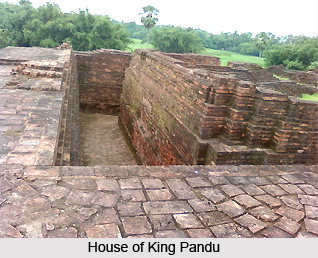 Pandu Rajar Dhibi, located in Sadar subdivision of Bardhaman district, West Bengal, is an archaeological site. Ajay River flows near by it. It is the first Chalcolithic site or Copper Age Site discovered in West Bengal.
Pandu Rajar Dhibi, located in Sadar subdivision of Bardhaman district, West Bengal, is an archaeological site. Ajay River flows near by it. It is the first Chalcolithic site or Copper Age Site discovered in West Bengal.
The main mound of Pandu Rajar Dhibi is believed to be related to King Pandu referred in Mahabharata. The first excavation of the site was done in 1954-57 by B.B. Lal. Besides Pandu Rajar Dhibi, a number of other sites have also been excavated in the adjoining districts.
Archaeological excavations at Pandu Raiar Dhibi have furnished several ancient artefacts belonging to non-Aryan and non-Brahmin Bengalis. Links has also been established between the Copper Age civilisation of east India and similar civilization of Rajasthan and central India. Well planned towns having developed streets and pavements has also been documented in the civilization. Trade and agriculture were the main streams of the civilization`s economy. In fact, Pandu Rajar Dhibi represents remains of a trading township. The people used to carry out trade not only with different regions of India, but also with the foreign countries, mostly by sea route.
This article is a stub. You can enrich by adding more information to it. Send your Write Up to content@indianetzone.com



















